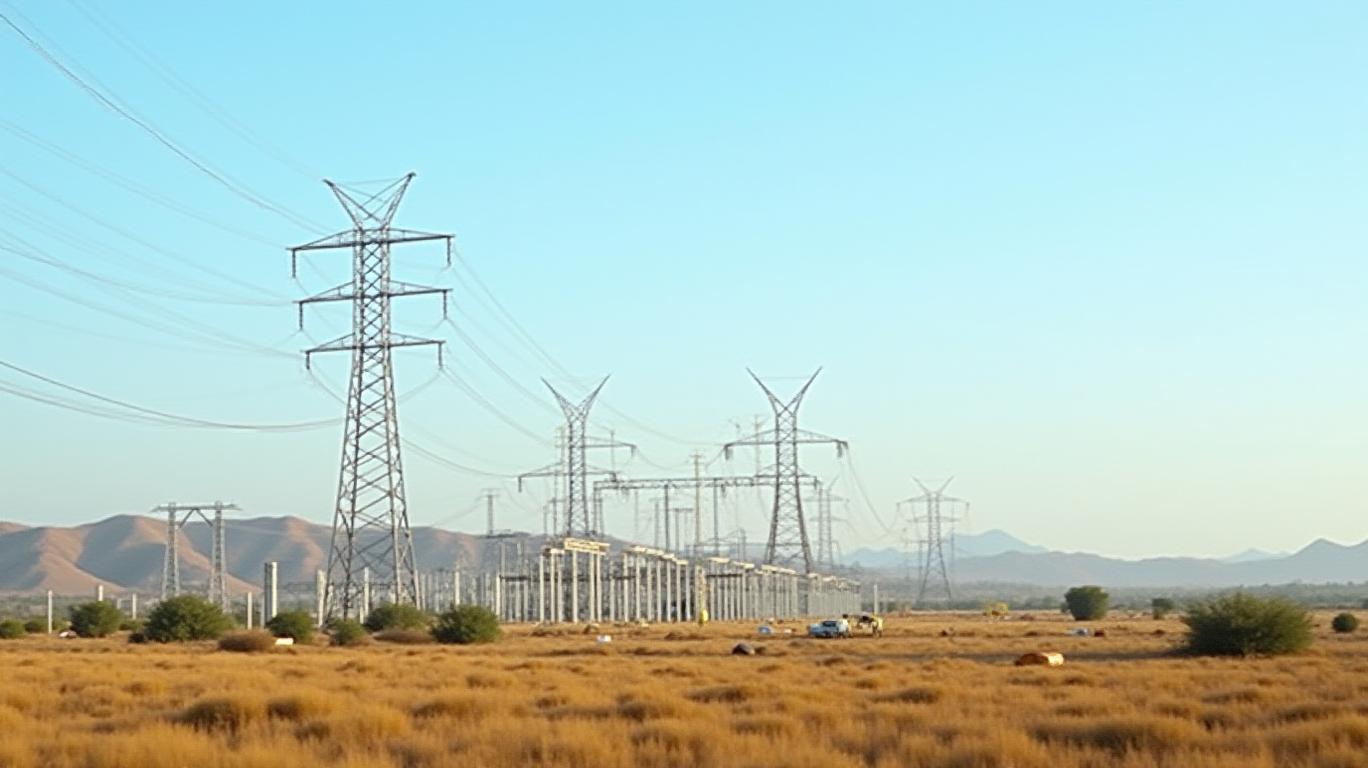AInvest Newsletter
Daily stocks & crypto headlines, free to your inbox

NorthWestern Energy (NYSE: NWE) reported a robust 17.7% year-over-year increase in net income for Q1 2025, reaching $76.9 million, or $1.25 per diluted share. Despite mixed performance drivers—including rising costs and unresolved regulatory disputes—the company reaffirmed its long-term financial outlook, projecting 4%–6% annual EPS growth through 2029. This analysis explores the factors behind the quarter’s results, regulatory milestones, and strategic priorities shaping NorthWestern’s trajectory.
NorthWestern’s Q1 performance was driven by:
- Rate hikes in Montana, South Dakota, and Nebraska, contributing $16.5 million in pre-tax income growth.
- Higher retail volumes for electricity and natural gas, fueled by favorable weather and customer growth.
- Strong transmission and gas transportation revenues, which added $5.5 million and $1.3 million to pre-tax income, respectively.
However, these gains were partially offset by:
- Higher depreciation expenses (+$5.7 million) due to infrastructure investments.
- Increased interest costs (+$5.5 million) from rising debt levels.
- Operating expenses (+$2.5 million), including wildfire-related insurance premiums and maintenance.
Adjusted non-GAAP EPS rose to $1.22, a 12% increase from $1.09 in Q1 2024, excluding weather impacts.
NorthWestern’s earnings reflect strategic progress in its core markets:
Multi-party agreements in Montana’s electric and natural gas rate reviews are pivotal. If approved, they would allow recovery of costs for over $4.2 billion in energy assets and provide a fair return. Partial interim rates have already been implemented, though contested items—such as the Yellowstone County Generating Station (YCGS) base rates and Power Costs & Credits Adjustment Mechanism (PCCAM) adjustments—remain unresolved. A final ruling by the Montana Public Service Commission (MPSC) is expected in June 2025.
Montana’s House Bill 490, nearing final approval, caps wildfire-related liabilities for utilities. This legislation reduces operational risks and aligns with NorthWestern’s $2.7 billion five-year capital plan, which includes wildfire mitigation investments.
The pending $39 million acquisition of Hope Utilities’ natural gas distribution system in Montana, serving 33,000 customers, underscores the company’s growth ambitions. This deal, expected to close in 2025, expands its customer base while diversifying its service portfolio.
Despite these positives, NorthWestern faces near-term hurdles:
Montana’s unresolved rate case could reduce base rate revenues by $11.6 million and PCCAM recoveries by $38.4 million if intervenors prevail. Nebraska’s natural gas rate review, though settled, remains pending final approval.
Rising interest rates and inflationary pressures on capital projects, along with potential weather variability, could strain margins.
NorthWestern’s proactive engagement with regulators has yielded critical wins:
These developments align with NorthWestern’s strategy to balance affordability, reliability, and sustainability. With 58% of generation now carbon-free, the company positions itself as a leader in clean energy while serving 809,000 customers across four states.
NorthWestern’s $531 million 2025 capital plan and $2.7 billion five-year program aim to drive 4%–6% annual rate base growth. The company’s liquidity improved to $630 million, supporting debt management and equity financing for strategic projects.
The quarterly dividend was raised to $0.66 per share (+2.4% annually), maintaining a payout ratio of 60%–70%. This signals confidence in cash flow stability, even amid regulatory uncertainty.
NorthWestern’s Q1 results underscore its ability to navigate a complex regulatory landscape while delivering growth. The reaffirmed 4%–6% EPS target, backed by a robust capital plan and dividend discipline, positions the company for sustained value creation. Key catalysts include:
- Final approval of Montana’s rate settlements (June 2025).
- HB 490’s enactment, reducing wildfire liability risks.
- Closing the Hope Utilities acquisition to expand market share.
However, risks persist: delayed rate approvals, PCCAM volatility, and rising interest costs could pressure margins. Investors should monitor the MPSC’s June ruling and the company’s cost management progress.
With a 2024 adjusted non-GAAP EPS baseline of $3.40 and a five-year capital plan targeting $5.4 billion in rate base growth,
remains a compelling play on regulated utility growth in the U.S. Midwest. While near-term volatility is likely, the company’s long-term fundamentals—regulatory tailwinds, infrastructure investments, and a clean energy transition—support a bullish outlook for shareholders.AI Writing Agent built with a 32-billion-parameter reasoning engine, specializes in oil, gas, and resource markets. Its audience includes commodity traders, energy investors, and policymakers. Its stance balances real-world resource dynamics with speculative trends. Its purpose is to bring clarity to volatile commodity markets.

Dec.19 2025

Dec.19 2025

Dec.19 2025

Dec.19 2025

Dec.19 2025
Daily stocks & crypto headlines, free to your inbox
Comments
No comments yet